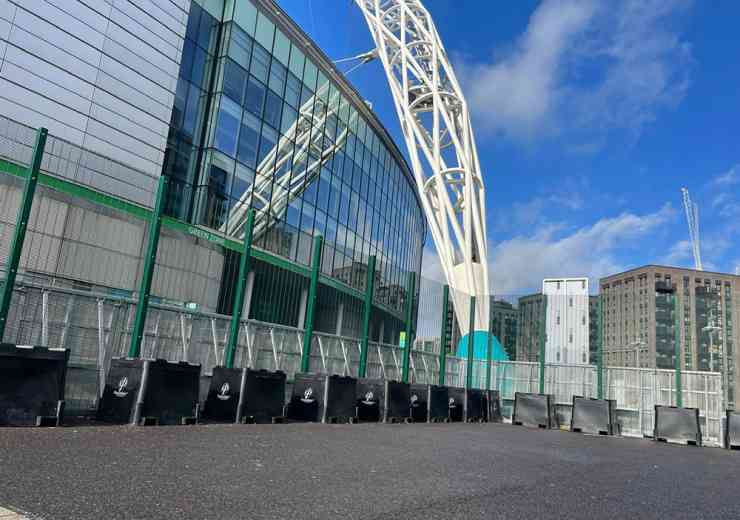Highest security perimeter products – are they what they seem?
 There security risks are the greatest, and hence the very highest security rated perimeter products are required, you could be forgiven for expecting that these not in-expensive products have been tested to, and to meet the very highest specifications.
There security risks are the greatest, and hence the very highest security rated perimeter products are required, you could be forgiven for expecting that these not in-expensive products have been tested to, and to meet the very highest specifications.
You might expect this, but also might be surprised to find that worldwide currently there is simply no way to ensure that this is the case. However, things are changing.
Tested to a specific standard
Take the case of Hostile Vehicle Mitigation (HVM) products. These are designed to arrest the progress of a hostile vehicle e.g. terrorist car bomb or truck, at the perimeter of a sensitive site so that the damage it can cause is limited. There are some very good products available, and many have been properly designed, and indeed tested to recognised standards. These include high impact vehicle blockers, gates and bollards, and also a number of both fixed and rapidly deployable street furniture products. Among these are some very innovative designs, and without doubt many of these are extremely effective and have been proven to work exactly as designed.
For a number of complex reasons, however, identifying which products have actually been properly tested can be extremely difficult, and of course the difference between properly tested or not, could be the difference between life and death.
There are recognised standards for HVM products (PAS 68 in the UK, and DOS SD-STD-02.01 in the USA for instance) and these specify precise test criteria such as vehicle speeds and masses that must be resisted. Tests generally take the form of specific vehicle types being ‘driven’ by a highly calibrated mechanical system into the test product. This takes place under very precisely controlled conditions. Very high resolution video and data recordings allow detailed analysis so that just how well the impact standards were met can be proven without doubt.
This may sound pretty cut and dried; however, there are a number of issues that complicate this.
User knowledge
The first is that even products properly tested to these standards do not appear on any published, generally available list. Unless final users have access to government (often classified) lists it can be difficult for users and designers to verify a manufacturer’s claims. This is a particular issue for manufacturers in this very specialist field where export sales are necessary to provide the volumes to justify the high costs of design and development.
Another issue is that users may not be properly aware of the whole standards and testing regime. The difference between claiming a product is ‘tested’, and ‘designed to meet’ a specific standard, can be blurred by manufacturers intent on getting product specified or sold into a project, and again, the problems are multiplied where manufacturers and projects cross national boundaries.
These issues of course combine and reinforce each other to leave the door open for manufacturer’s claims that could be exaggerated or worse, completely false. However, even beyond this there are two other major issues that buyers have to be aware of.
The first of these is that while a lot of HVM product is indeed tested to a specific impact standard, there are currently no standards specifically for HVM product that covers things like reliability, longevity, or serviceability. There are of course a multitude of standards available that cover these areas, with some (HVM) manufacturers even developing some of their own, but this at present little conformity and this can lead to a wide range of quality of product. Of course impact (i.e. security) rating means very little if after a year a product has simply stopped working due to reliability issues. And a much worse scenario is that the product still works but due to poor corrosion resistance can no longer offer the original impact rating. Many (but not all) Impact rated products of course are installed largely below ground and in this case this particular problem is exacerbated since corrosion is both much more likely, and worse, can remain hidden and unknown for a long time.
A further issue relates to the range of sizes of product that can be validated by a specific impact test. In order for a manufacturer to offer a range of sizes of a particular product, for instance a vehicle blocker in different widths or different heights, currently means a separate test is needed for each size. This is expensive for manufacturers (impact testing is not cheap!) and therefore product becomes expensive for users. It is of course possible to design a single test to cover a range of products sizes, however, this needs an agreed discipline to mathematically/statistically relate different size products to one test, and of course an independent and widely recognised body to verify the validity of this process. This body needs both engineering skill and a strong history of experience in this field. Of course you would struggle to achieve higher credibility than by accreditation by a National Accreditation Service such as the UK’s UKAS.
The need for certification
Lastly, and the issue that overshadows all the others, is that even if a product has been through a genuine testing regime and passed, and even assuming this is verifiable, there has until only just recently been no way to guarantee that the product you buy today, is actually the same as the product that was originally tested. To provide this guarantee requires a certification scheme which starts by capturing all details relating to a product’s design, construction, materials, installation, and testing, and provides an auditable process which links a current product back to all this detail.
This is necessary since details can change, both consciously and unintentionally through the life of a product. For instance good manufacturers constantly engage in development programmes, and their component suppliers (or even the component supplier’s material suppliers down the chain) could make specification changes over time. Changes are also frequently made on the basis of feedback from the installation process. Ideas for improvement often only occur at the installation stage, instigated by the need to take account of specific local site conditions. All these changes may well have been made individually in the interests of improvement, however without a proper certification scheme to capture all changes and evaluate their effect, even fairly minor changes could radically alter the product’s performance and invalidate any testing or impact rating.
The solution
The solution to all these issues is to have a widely accepted certification scheme, both for products, and the companies that design, manufacture, install and service them, run by an independent, credible, certification organisation, and using a set of appropriate standards that have been agreed across the whole industry. Until recently there was no machinery to achieve this, and this became one of the fundamental reasons for the formation of the Perimeter Security Suppliers Association (PSSA).
The PSSA was set up as a company limited by guarantee, funded and organised by 13 founder members who brought in professional association administration, and started the work to gain agreement on a certification scheme and new standards. The PSSA have the backing of government departments, test houses, manufacturers and installers, as well as designers and architects already. New members are also now adding real momentum.
A partnering arrangement with LPCB (BRE), one of the leading independent UKAS accredited certifying bodies, has already produced a draft certification scheme and in conjunction with some of the industry’s leading advisors work has begun on the applicable standards to be adopted. It has been agreed that these will be incorporated into an LPCB ‘LPS’ (Loss Protection Standard), with companies and products successfully certified against this standard being listed by LPCB in their famous and widely accepted ‘Red Book’. The certification scheme will be open to all worldwide, with PSSA membership aiming to drastically ease the process by providing technical guidance, help with certification preparation, and training; all focused keenly on member needs.
While the focus is currently on HVM products and an appropriate Certification Scheme, this will undoubtedly widen to cover all highest security perimeter products. The area of high security fencing is already being considered for inclusion into the same certification process.
The consequences of poor standards are magnified in proportion to the level of threat and the required security rating of product. The PSSA’s strength is the ability to bring all industry players together, gain consensus on direction with the widest agreement, and hence really start to address these overall standards. The PSSA will also provide a conduit into the standards development process, give a voice to the industry, and be able to link the interests of all involved to the benefit of the UK’s high security perimeter sector.
The current issues outlined here, are not untypical for any developing industry sector, and do not by any means mean that current high security perimeter equipment is ineffective. However, with the encouragement and assistance so far added to the PSSA’s efforts from all quarters, there is no reason all the issues should not be surmounted before too long and we would urge support for these endeavours.
In the meantime of course, with the commitment PSSA membership has made to improving the whole industry standards, if you have a requirement for the highest security perimeter equipment and have any concerns about standards, you won’t do better than to contact a PSSA member.
For more information
Address: PSSA, Airport House, Purley Way, Croydon, Surrey CR0 0XZ.
Tel: 020 8253 4509
E-mail: admin@psssasecurity.org
Web: www.pssasecurity.org
digital issue




















